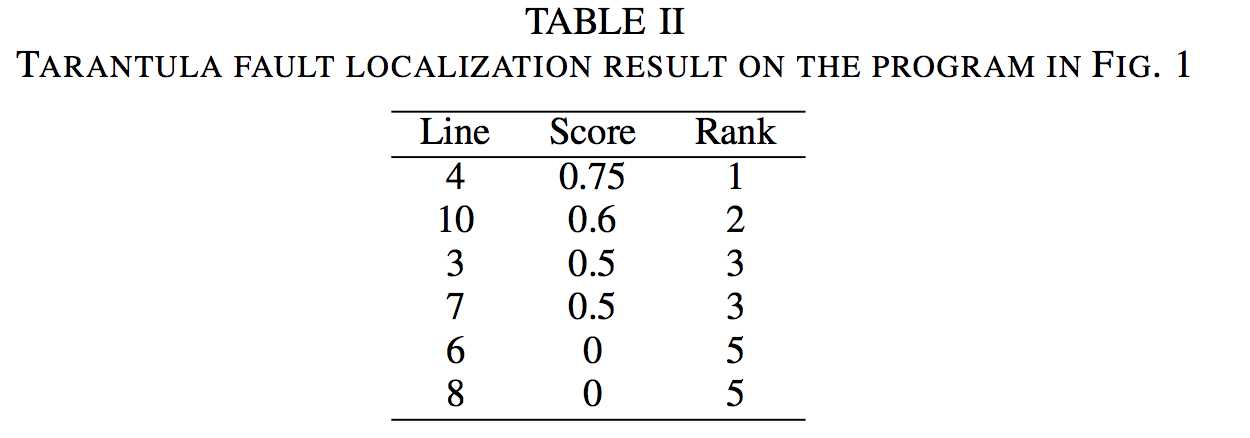One example to understand SemFix: Program Repair via Semantic Analysis
One example to understand SemFix: Program Repair via Semantic Analysis
Basic Information
- Authors: Hoang Duong Thien Nguyen, Dawei Qi, Abhik Roychoudhury
- Pulication: ICSE‘13
- Description: Semantic Program Repair
Example
Buggy code:

Test Suite:

Overview
Step 1: Fault Localization
Tarantula is applied to produce a suspiciousness ranklist of statements.

Step 2: Generate Repair Constraint via Symbolic Execution

Constraints: f(1, 11, 110) > 110∧f(1, 0, 100) ≤ 100∧f(1, ?20, 60) > 60
Step 3: Generate a Repair
Employ program synthesis to solve the constraint for f in order to get a concrete function. Program synthesis requires basic components (e.g. constants, “+”, “?”) as ingredients to construct the function f
In this technique, these components are incrementally provided to program synthesis.
In the first trial, only a constant is allowed. However, no constant function can satisfy the above constraint. We then allow function f to use one “+”, i.e. f can take either the form of var1 + c or var1+var2, where var1 and var2 are in {inhibit, up_sep, down_sep} and c is an integer constant. The synthesis procedure can find a solution f(inhibit, up sep, down sep) = up sep + 100 which is a successful repair to the program in Fig. 1. Note that if “?” is used instead of “+”, we will get f(inhibit, up sep, down sep) = up sep ? (?100) as repair.
One example to understand SemFix: Program Repair via Semantic Analysis
